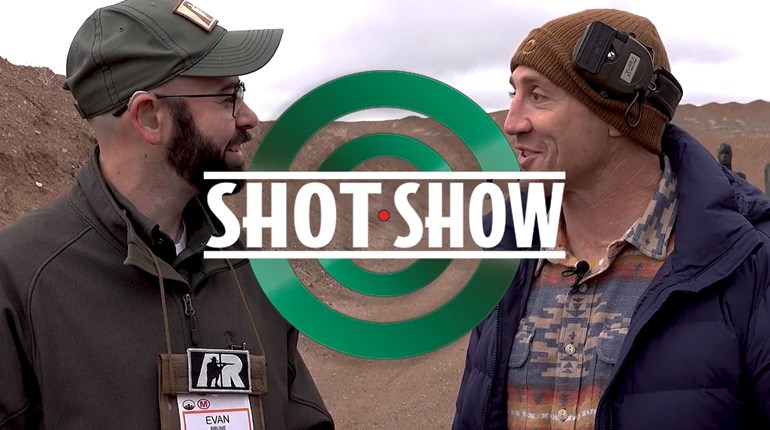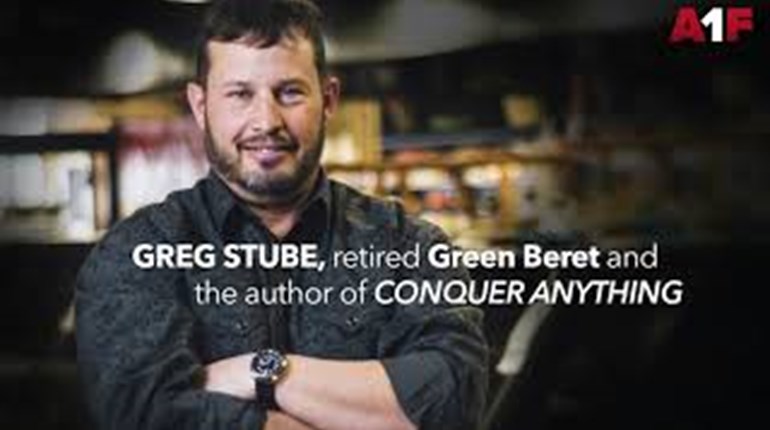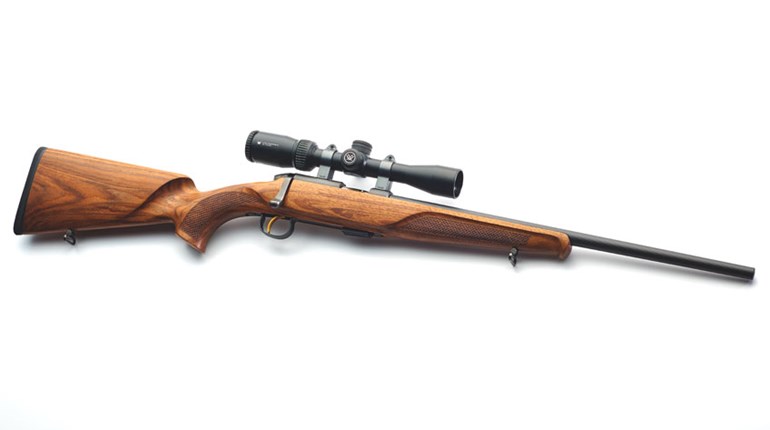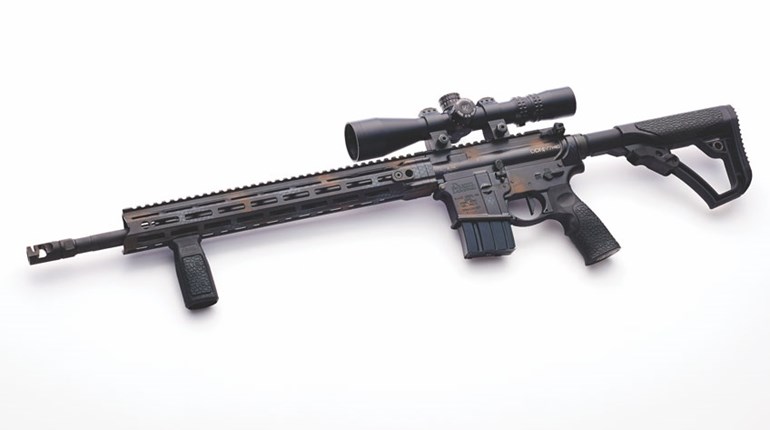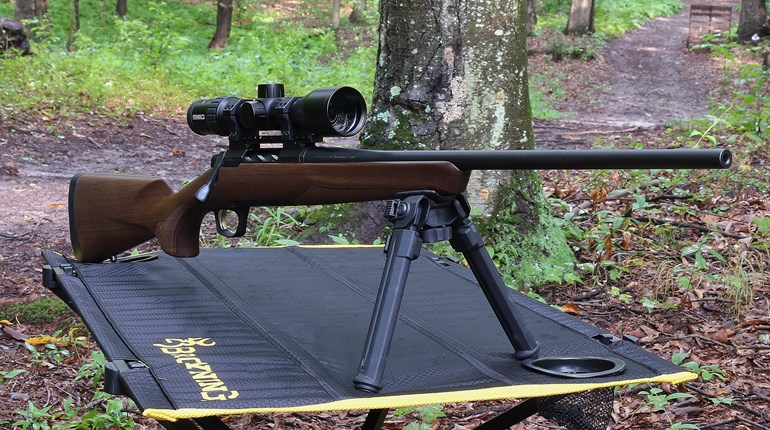
James Jarrett, NRA Carry Guard director of curriculum, is a tough interview in a way we didn’t expect. Even the most lackadaisical stroll through his curriculum vitae results in an unwelcome conclusion: We doubt we’ve made quiiiiiite as good use of our time as he has.
One wonders how he’s had time to fit in so much, frankly, to say nothing of so much excellence. That whole Green Beret thing (10 years); several kinds of sworn law enforcement (LAPD, Toulumne County Sheriff’s Office and deep cover intelligence operative); college professor and court-approved, multi-specialty forensic expert; and world-class competitive shooter and military/law enforcement/civilian firearms instructor (including his own academy).
Then, there’s the difficulty of address: Is he Professor Jarrett, or Sgt. Jarrett, or Agent Jarrett? This is where a smidgeon of relief mercifully quelled our apprehensive awe. “Just James,” he averred, with the first hint of a typically self-deprecating chuckle.
Now, of course, he’s added the director of curriculum post with NRA’s Carry Guard. This is particularly astonishing when you consider how many achievements came in the wake of a truly horrifying injury in 1983. It’s as ugly a tale as can be easily imagined—a malfunctioning prototype, an unexpected detonation, a near bleed-out, and the fragments of this world-class shooter’s right hand packed in a bag of snow.
“No way we’re gonna be able to save that hand,” was the first verdict. In the end, multiple operations, harvested bones and skin from elsewhere on his body—and a Ruger Security Six in the operating room for a mold so his grip and trigger finger could be reconstructed—gave James a right hand of sorts, though with a permanently shortened trigger finger and no “web” between the thumb and index finger. “It was a blessing in many ways, though that was harder to see at the time. I decided to see it as a challenge, and it sure gave me empathy for the pains and difficulties of others,” he says.
American Warrior: It seems to us that you’ve done it all, James. Can you say what made NRA Carry Guard appeal after the other firearms-related work you’ve done?
James R. Jarrett: I guess I thought I was finished too—especially since this fall will mark 50 years of teaching weapons and other fighting skills, beginning with Project Delta in South Vietnam in 1967. More than enough of a good thing?
It may be odder still, considering I don’t really shoot for “fun.” Perhaps that’s a reflection of having to view it as a deadly-serious, life-and-death business for so long.
But in terms of NRA Carry Guard, it’s important for people to understand that it’s a unique undertaking in several ways. And by “unique” I mean practical, quantifiable skills offered in a way that—though certainly advertised and tried—they haven’t actually been offered before, especially not to people outside military or law enforcement circles.
AW: But not hard-core “tactical,” if we’ve understood you correctly?
JRJ: “Tactical” is a seriously overused word in my opinion, especially when it comes to how regular folks should be thinking about defending themselves. In the first place, de-escalation or outright retreat is vastly preferable to a gunfight, no matter how offensive the aggressor is. It may not always be possible. Next, I can just about teach a chimpanzee to shoot, but I can’t teach a chimpanzee judgment. That’s the crucial differentiator.
It’s also what the NRA Carry Guard curriculum does in a unique and superior way—versatile fundamental skills that support good decision-making. As a professor and police officer, I’ve studied thousands of shootings, and the fundamentals are always where things go wrong, not in the off-in-the-weeds details.
NRA Carry Guard does this so much better by focusing on “why,” and not just “how.” If mindset and correct fundamentals are in order, there’s plenty of bandwidth for avoiding the need to shoot altogether. This way of instructing also acknowledges the simple truth that there’s no possibility of teaching everything in an “if/then” methodology. This approach typically overwhelms even professionals eventually. Regular folks aren’t well-served by such a methodology, either.
AW: “Fundamentals” and “beginner” go together in some reader’s minds. Any issues there?
JRJ: Yes, there are. This is not a basic firearms course. Anyone who passes out of Level 1 Carry Guard will be an intermediate shooter by just about any standard. With a handgun at CQB ranges (inside 10 yards), they’ll have extremely versatile, sound skills. While students shoot at longer distances, Level 1 concentrates on closer-in situations. In fact, I never started as close in with my original teaching as Eric Frohardt (NRA Carry Guard director of training). He starts students at 3 yards, and he’s made a believer out of me. His system works.
Another thing we strongly emphasize is the need to keep the skills fresh. Level 1 is essentially “immersion” training, but the techniques “seat” over time and with repetition. Handgun skills are surprisingly perishable, after all.
AW: Would you recommend any particular precursor?
JRJ: Take NRA Basic Pistol and understand proper weapons safety and manipulation. Manipulation skills are actually a better indicator, in my experience, of end performance. If students have that, teaching them the mechanics of actually shooting is easy. That makes Basic Pistol a great place to start. They are obsessed with and committed to safety, in a good way. We cover this in Carry Guard Level 1, but don’t have to start at the very beginning.
Designing this part of the curriculum was pretty messy, looking back. But the NRA asked us for a truly 21st-century curriculum, even if there was some kicking, screaming and dragging involved. <<Laughing>> As George (Severence, NRA Carry Guard national director) puts it, the “off-ramp” for Level 1 had to be true proficiency. This means we can’t start at the absolute beginning and expect to cover the necessary legal, moral and skills content in three days. It also means “everybody gets a trophy” thinking was out from the start. Some folks will have to come back.
AW: In the best sort of way, James, we feel like we've been drinking from an NRA Carry Guard fire hose. Any closing thoughts?
JRJ: Only in a way that speaks to my own motivations for getting involved with NRA Carry Guard, but perhaps readers will find some applicability in their own lives, too.
The Second Amendment is our most quantifiable liberty, maybe the only truly quantifiable one. In the modern era, this means it has to be wired into shooting. It keeps the citizen/government interaction a conversation, rather than a confrontation, and that’s the way it can and should be.
There’s a second level too, and Dom Raso says it well: “We need to be our own first responders.” This is the stuff of real liberty.
At either extreme, NRA Carry Guard is the basis for Americans not just to survive, but to prevail. I’m glad—and very proud—to be a part of that.
AW: Thanks for everything, James, and especially for your long service to our nation.
Frank Winn has been studying arms and their relationship to tyranny, meaningful liberty and personal security all his adult life. He has been a firearms safety/shooting instructor for more than 20 years, and earned state, regional and national titles in several competitive disciplines.












